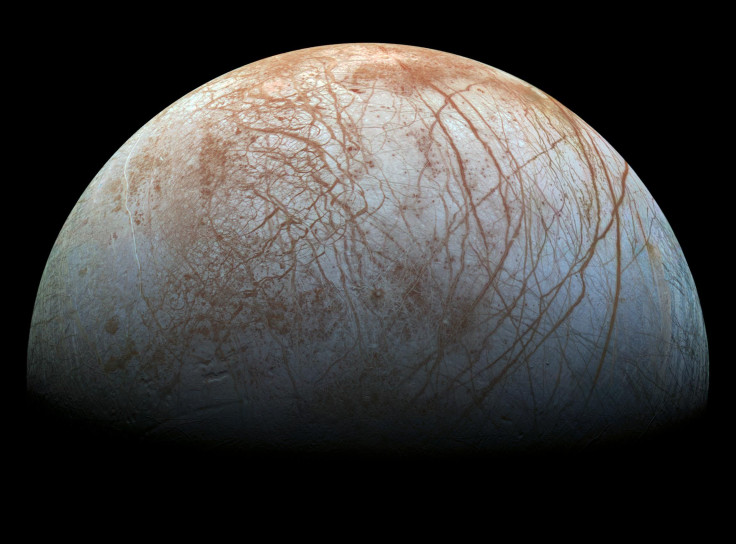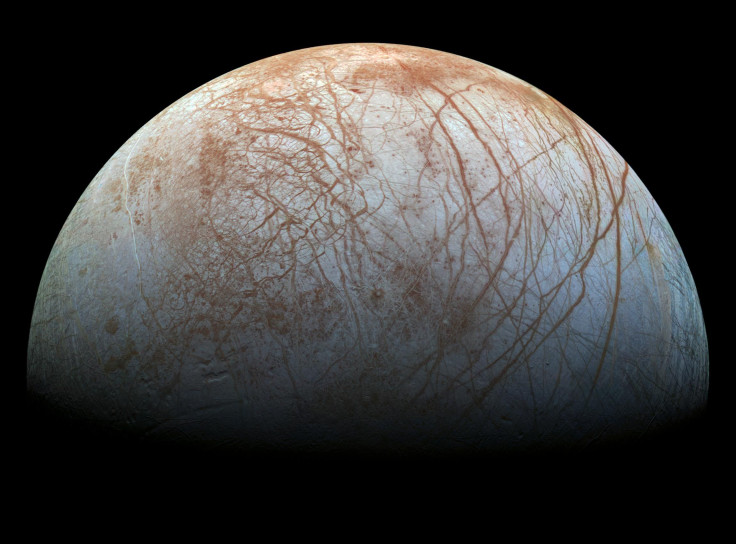Tectonic Ice Plates On Jupiter’s Moon Europa May Signal Alien Life

Europa might have the kind of tectonic plate activity that causes earthquakes here on our planet, and for that moon of Jupiter, it could be essential for supporting alien life.
A new investigation shows that Europa could be home to a process called subduction, in which one section of the planet’s crust squeezes underneath another. Although Europa is covered in ice, scientists have suggested that there could be an ocean lurking underneath — and subduction would be one way the moon delivers food to creatures living within it.
“Europa may be the only planetary body other than Earth to have plate tectonics,” the scientists wrote in their study, published in the Journal of Geophysical Research: Planets.
Previous research has shown that certain sections of the icy shell covering Europa expands just like mid-ocean ridges, the mountainous areas on Earth’s seafloor that develop as a result of tectonic activity. The scientists on this study used computer models to figure out whether the moon’s structure would allow for tectonic plate movement like that and whether subduction can occur on the ice-covered moon. Among their results, they found that the differing levels of salt believed to exist in the outer ice shell helps this subduction process along, because it creates sections of varying densities that allow some to sink below others.

By comparison, tectonic plate subduction on Earth occurs through varying temperatures, because the cooler material is denser and sinks more.
Finding the process is possible on Europa has implications in the search for alien life, because subduction could help transport nutrients for extraterrestrial life forms from the surface and down into the planet’s interior, where many scientists have suggested that there is an ocean.
On Europa, the “surface crust is enriched with oxidants and other chemical food for life,” according to Brown University. “Subduction provides a means for that food to come into contact with the subsurface ocean scientists think probably exists under Europa’s ice.”
According to the study, the possible subduction of tectonic plates could also tell scientists more about Europa’s composition and about our own home.
“It’s fascinating to think that we might have plate tectonics somewhere other than Earth,” researcher Brandon Johnson said in the Brown statement. “Thinking from the standpoint of comparative planetology, if we can now study plate tectonics in this very different place, it might be able to help us understand how plate tectonics got started on the Earth.”
© Copyright IBTimes 2024. All rights reserved.





















